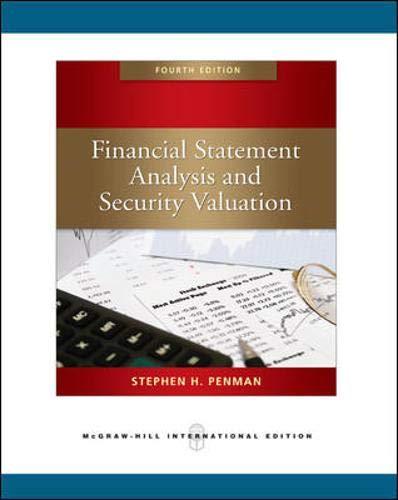Chubb Corporation is a property andcasualty insurance holding company providing insurance through itssubsidiaries intheUnited States, Canada, Europe,
Question:
Chubb Corporation is a property andcasualty insurance holding company providing insurance through itssubsidiaries intheUnited States, Canada, Europe, andparts ofLatin America and Asia. Its subsidiaries include Federal, Vigilant, Pacific Indemnity, Great Northern, Chubb National, Chubb Indemnity, andTexas Pacific Indemnity insurance companies.
The insurance operations are divided into three business units. Chubb Commercial Insurance offers a fullrangeof commercia! customer insurance products, including coverage for multiple peril, casualty, workers compensation, and property and marine. Chubb Commercia! Insurance writes policies for niche business through agents and brokers.
Chubb Specialty Insurance offers a widevariety of specialized executive protection and professional liability products for privately andpublicly owned companies, financial institutions, professional firms, andhealth careorganizations. Chubb Specialty Insurance also includes surety andaccident businesses, as wellas reinsurance through Chubb Re.Chubb Personal Insurance offers products for individuals withfine homes and possessions who require more coverage choices andhigher limits thanstandard insurance policies.
Before proceeding withthis case,youshould understand how insurers "makemoney."
Insurance companies rununderwriting operations where they write insurance policies and processes and payclaims on those policies. The delay between receipt of premiums and payment of claims produces a "float,' so they are also involved in investment operations where theymanage investments inwhich thefloat is invested. Accordingly, youseeboth investment assets andliabilities onthebalance sheetaswellas assets andliabilites associated withinsurance. You also see revenues andexpenses associated withboth activities in the income statement.
Afrequently usedmeasure of property and casualty insurance underwriting results is thecombined lossandexpense ratio. Thisratioisthesumofthe ratioof incurred losses and related lossadjustment expenses to premiums earned (theloss ratio) andthe ratioof underwriting expenses to premiums written (theexpense ratio), afterreducing bothpremium amounts by dividends to policyholders. When the combined ratio is under100percent, underwriting results are generally considered profitable; when the combined ratio is over 100percent, underwriting results aregenerally considered unprofitable.
Chubb's ratios foryears2001-2007 are below. In theirdiscussion of results for 2007, management noted that underwriting results were significantly moreprofitable in 2007 and 2006 compared with2005. Thelossratio for2005wasattributed to catastrophic losses primarily from Hurricane Katrina. The lower results in 2003 were due to large asbestos and toxic wasteclaims, butevenexcluding these, the combined lossandexpense ratio would have been97.5 percent.The200I ratiowasaffected byclaims arising from theSeptember 11 attack inNewYork andsurety bondlosses relating to theEnron ban kruptcy. Without these claims, thecombined ratiowould have been100.5 percent.
Loss ratio Expense ratio 2007 2006 52.8% 55.2% 64.3 % 2005 2004 2003 2002 2001 75.4% 80.8% 31.3 32.6 106.7% 113.4 % 30.1 Combined ratio 82.9% 63.1% 67.6% 29.0 28.0% 29.2 30.4 84.2% 92.3% 92.3% 98.0% These ratios give a good indication of the profitability of the insurance operations, but we need dollar numbers to get to the valuation implications. Further, they do not consider the performance of the investment operations. Chubb's balance sheets for 2007 and 2006 are in Exhibit 9.16 in Chapter 9 as part of the Chubb case M9.2 there. Its 2007 income statement is also given, along with a statement of comprehensive income that Chubb reports outside both the equity statement and the income statement. If you worked case M9.2, you will have reformulated these statements. If not, do so now before you proceed. The reformulation should capture the way that Chubb carries out its business operations, with the analysis of the profitability of the business in mind. In particular, make sure you distinguish the underwriting operations from the investment operations. Chubb has some relatively small real estate operations. Group these with the underwriting operations. The firm's statutory tax rate is 35 percent, but note that tax-exempt securities account for $232 million of investment income. Chubb's loss and expense ratios indicate that 2007 was a very good year. The stock price, under the ticker CB, rose from $50 to $54 on these results. You are required to carry out an analysis that challenges this stock price. You do not have the complete information that you would like for forecasting, but you will be surprised how far you get simply on the basis of the financial statement information before you As you proceed, also deal with the following: A. Calculate the residual income from underwriting operations and from the investment operations and decide how you will use these numbers for your valuation. Use a re- quired return of 9 percent for the underwriting operations and 6 percent for investment operations. Why would the two operations have different required returns? B. Explain how you dealt with the following features in your valuation: 1. Investment income 2. Realized investment gains 3. Unrealized appreciation of investments 4. Book value of investments 5. Equity investments 6. Net operating assets 7. Tax allocation C. Insurance companies are suspected of cherry-picking investments. How did you deal with this? D. What features of Chubb's accounting-and insurers in general-might give you pause in basing your valuation on the financial statements? Real World Connection Minicase M9.2 in Chapter 9 deals with the reformulation on Chubb Corporation's financial statements.
Step by Step Answer:

Financial Statement Analysis And Security Valuation
ISBN: 9780071267809
4th International Edition
Authors: Penman-Stephen-H, Steven Penman





